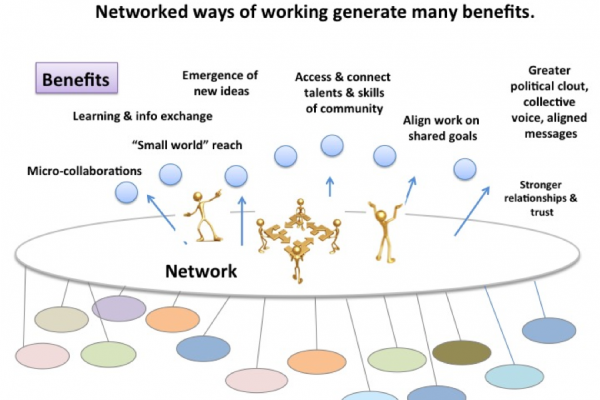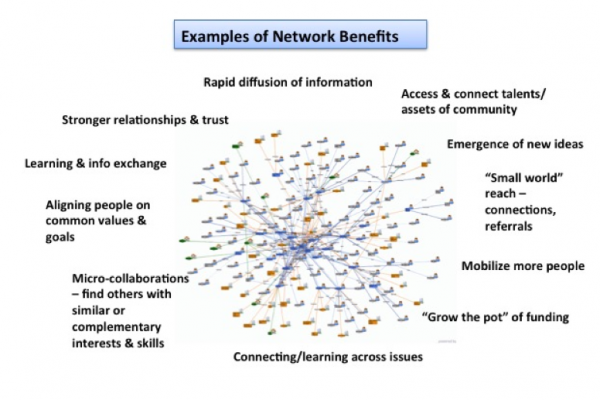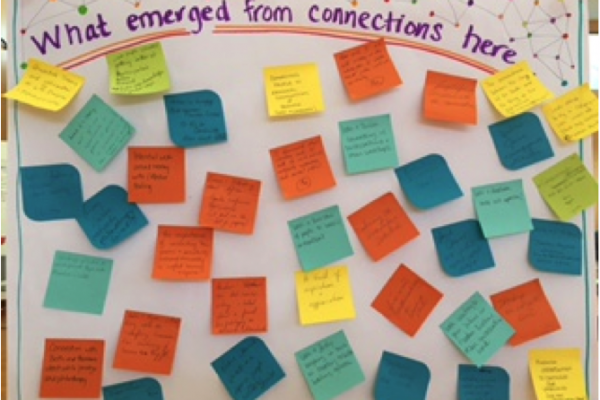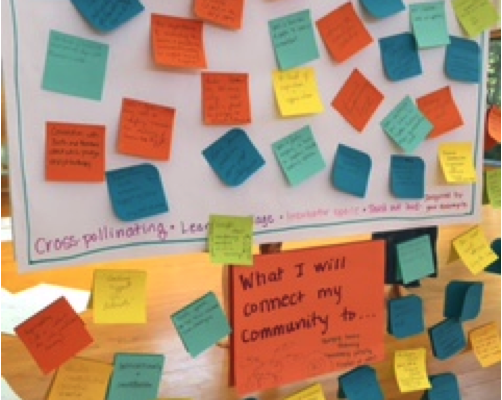In a conversation with a potential new client, I heard common concerns about their community. People working on the same issues were not talking to each other, and there was duplication of work and a sense of community fragmented. People were working hard but not having the impact they wanted. A core way to overcome this is to work in networked ways to enable greater alignment of work and collaborative learning. Working in this way can generate many benefits as illustrated below; however, if we are not aware of and don’t design for them, they may not be realized.

It is valuable to periodically devote time to reflect on what benefits have arisen from a network or other collaborative gathering and share these stories. We did this with a network we worked with in Boston, by sharing this graphic on a handout with the question:
What is an example of something that changed in your work as a result of participating in this network?
We used the 1-2-4-All exercise to allow them to individually reflect, then pair up to discuss, and then join a group of four to find common themes.

In facilitating collaborative work, I now focus on generating value along several dimensions, including how:
- individuals are able to advance their own work (e.g., make connections, learn information, solve challenges on their plate, see where/how their work can support larger goals)
- participants in the network find opportunities to create “micro-collaborations” (e.g., people and organizations find ways to work together in pairs or small groups to advance their work)
- participants work together on joint actions and projects (e.g., work gets done on things no one organization can do alone)
- through the network, work is connected to other complementary networks or communities (e.g., regional, state, national or related issues/places)
There can be a tendency to focus solely on the joint work of the network and leave value ‘on the table’ by not designing space for individuals to advance their work or spur small collaborations among members. The latter generates a lot of value for those participating and will keep them coming back. Our blogs on designing meetings to enhance networking offer ideas on how to generate more value to participants.
On the final morning of a three-day gathering recently, we took 15 minutes to conduct an exercise that helped make visible the benefits of the connections made during our time together. I asked people to fill in post-it notes with examples of: What emerged from connections here: and then share examples back to the group. Following that, I asked for specific examples of what they would be bringing back to their community, and we put those around the original poster (e.g., new ideas, connections, projects).


It was energizing and inspiring to see all of these benefits, which may have remained invisible if we had not asked.
When you ask people how they came to be doing the work they do, or how a project or success came to be, the stories often center on meeting a key person, a door or opportunity being opened, or a connection that gave them a new idea or access to resources. Change flows through relationships, so they need as much focus as action plans.
